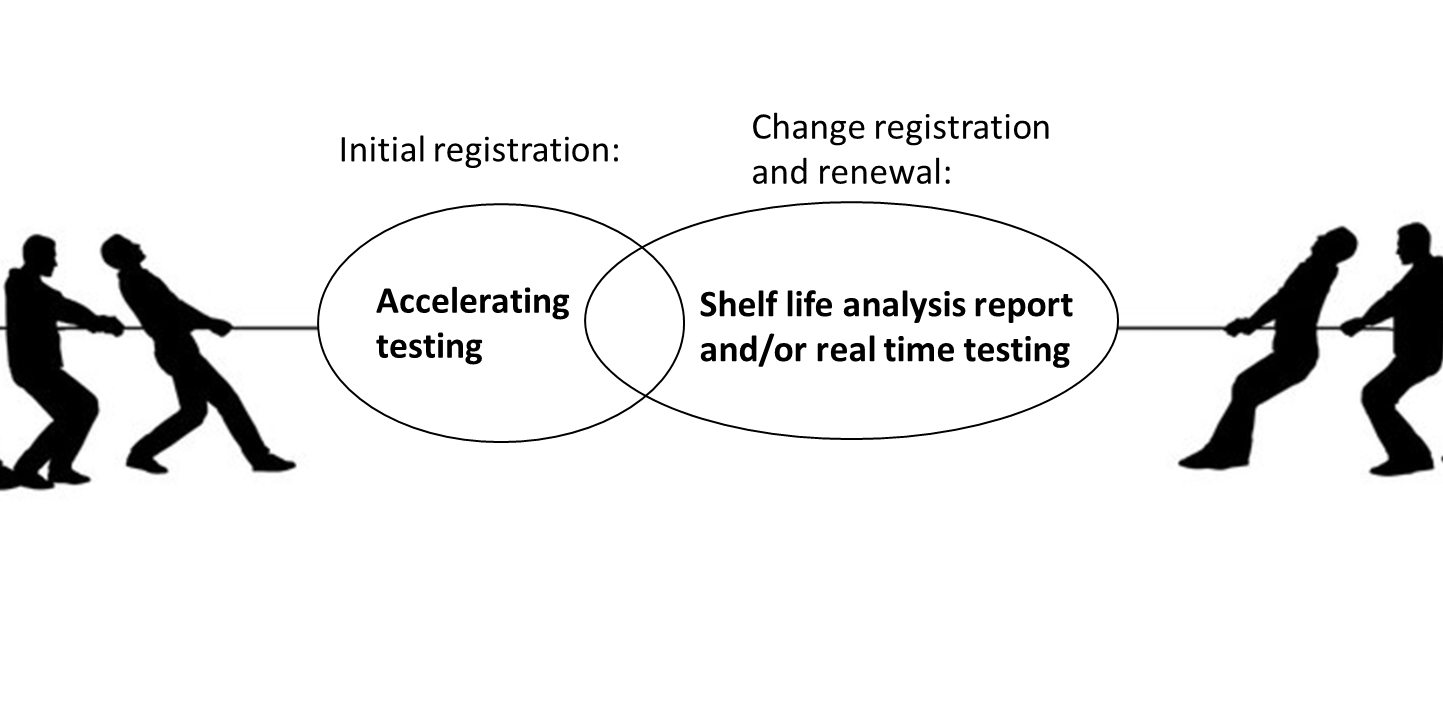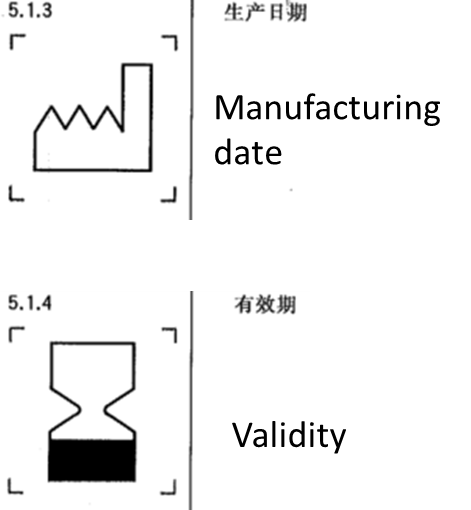Aging or stability test (Shelf life) and Life time
also called Accelerated Shelf Life - (ASLT) or stability test

In this article we want to always the overall shelf life (aging validation) of medical device in China because it is solid written in regulation and essential for product registration. Besides we discuss the consideration of shelf life and life time in the other market.
*Below shelf life is meaning overall time from manufacturing to expiration of medical device.
Shelf life validation is the same as aging or stability test.
Definition of shelf life of medical device in China
What is written in Chinese guidance?
Shelf life of active medical devices refers to the expected period during which the medical device registration applicant can ensure the safe and effective use of the product through risk management before the market, during which the product can maintain its scope of application.
Shelf Life of passive implantable medical devices refers to the period of time during which medical devices are stored in the form of final products and can play their intended role. The end of the shelf life is the product expiration date. After this period, the medical device product may no longer have the expected performance parameters and functions.
Shelf life (or called stability or aging) is a usual term which the manufacturers indicate at labelling (valid period or in term of expiration date). The x years shelf life often is derived from best practise on the field, from analysis of critical components and perhaps from the shelf life of competitor products. FDA is requiring accelerating shelf life testing of respective medical device. In EU there is no special guidance for shelf life despite the mentioning the term in MDR. Recently Chinese authority NMPA strengths the shelf life validation of medical device with binding regulations and emphasis of shelf life evidence at review period of more medical devices.
Besides it, in “guidance of instruction for use and label" it stipulates:
IFU
Article 10 (10): Production date, shelf life or expiration date
Label
Article 13 (5): Production date, shelf life or expiration date
In standard YY/T 0466.1-2016 “Symbols - Part 1 medical devices for medical device labels, labeling and information: General requirements” there is required symbol of manufacturing date and shelf life which is the same as validity of medical device.
Regulation of shelf life in China
The following guidances and standards should be compliant with during the preparation of submission dossier. So far there is guidance for active - und passive implantable medical device. In Chinese standards, the requirements of shelf life for sterile medical device are obligatory too.
Standards
GB/T 34986-2017 “Methods for product accelerated testing"
YY/T 0681.1-2018 “Sterile medical device packaging test methods Part 1: Guide to accelerated aging test”
Guidance
“Shelf life of active medical device”
“Shelf life of passive implantable medical device” (draft in 2021)
Active medical device
There are some pathways at guidance “active medical device shelf life” to validate shelf life. The first option is to make an analysis of critical components (or feature -, replaceable -, moving components) The second option is through real time or accelerating testing. Accelerated testing is oft essential allowed for market launch, but must be followed up by real-time data.
For the pathway of shelf life analysis, the following impact factors should be considered and accessed:
- Critical components
- Frequency and intensity of use
- Transportation, storage and use environment
- Cleaning and disinfection
- Packaging and sterilization
- Maintenance and repair of components
- Commercial factors
Template of shelf life analysis report
- Goal (info of medical device)
- Evaluation method
- Evaluation path
- Analysis of Impact factors
- Overview of evaluation
| Items | Comments |
|---|---|
| Product (system)/subsystem/component name | - |
| Influencing factors | - |
| Model | - |
| Attributes | Independent developed/purchased parts |
| Break down relationship types | Critical parts/non-critical parts; characteristic parts/non-characteristic parts; replaceable parts/non-replaceable parts; moving parts/non-moving parts; electronic parts/mechanical parts |
| Attributes | - |
| Service life / failure rate | Independent developed/purchased parts |
| Evaluation method | Accelerated/real-time aging test; Empirical data; Reliability analysis methods, simulation test methods or other theories and simulation calculations; |
| Evaluation completed unit | - |
| Whether it leads to unacceptable risks during the service life | - |
- Conclusion
- Annex
(1) Accelerated aging test report
(2) Fatigue test report
(3) Simulation calculation report
(4) Reliability analysis report
(5) Empirical data analogy analysis report
(6) Risk analysis report
Real time shelf life testing
Another option is to take some medical devices from the field after x years using back. The key safety- and performance testing should be done to prove the safety and effectiveness requirements. Essential as submission dossier to authority is test plan and test report, better with all tests passed:)
The longer the device taken from the field for real time testing, the more convinced is the result of the validation test. In idea case, x years on field should be longer or at least the same as defined shelf year.
Accelerating shelf life testing
The accelerating validation of shelf life is based on Arrhenius formula (ASTM F1980) to accelerate the rate of deterioration of the product without altering the mechanisms or order of changes seen in the product under normal storage conditions. Arrhenius equation states that a temperature rise of 10 °C will double the rate of a reaction. The manufacturer has to choose variable factor accelerating time, and accelerating temperature depending on medical device to make a plan of accelerating shelf life testing.

AAT: accelerating time
RT: real shelf life time
Q10: Accelerating factor
TAA: Accelerating temperature
TRT: Real storage temperature
Passive implantable medical device
In 2021 NMPA issued draft guidance “shelf life of passive implantable medical device” which is applicable for passive implantable medical device.
As well as for active medical device, impact factors on shelf life of passive implantable medical device should be taken into account:
Inner impact factor
- Critical components and material
- Interaction between components and material
- Interaction between components/material with packaging material
- Manufacturing process (as sterilisation)
- Radioactive material
- Microbial barrier
Outer impact factor
- Storage condition
- Transport condition
- Manufacturing method
- Manufacturing environment
- Packaging
- Raw material
There are two shelf life validation of passive implantable medical device: real time shelf life testing and accelerating shelf life testing. The principle is described above at chapter of active medical device.
For both validations, the performance test (physical, chemical and biocompatibility if applicable) and packaging validation should be provided after shelf life testing. It means that within shelf life of medical device, the key performance and intact packaging is guaranteed. It is recommended to have 3 checking points to conduct performance and packaging test. So last checking point should be the same as proposed shelf life.
Cross market and cross branch thought
Since the publication of Team-NB Position Paper Medical Device Lifetime in EU it is time to consider shelf life with life time (frequency of use) together at design specification, risk management and verification.
Cross market comparison
Essential Principles of Safety and Performance of Medical Devices and IVD Medical Devices, IMDRF
3.13 Expected Lifetime/Expected Service Life: Time period specified by the manufacturer during which the medical device or IVD medical device is expected to maintain safe and effective use
FDA, US
Shelf life is the term or period during which a commodity remains suitable for the intended use.
Stability is "the extent to which a product retains, within specified limits, and throughout its period of storage and use, i.e., its shelf life, the same properties and characteristics that it possessed at the time of manufacture."
EU MDR Life time at 6, 23 in GSPR: General Safety and Performance Requirements
IMDRF life time = Chinese shelf life = US shelf life =EU lifetime > EU service life
There is no supporting regulation about time from manufacturing to first use as in food branch. Even after first use for many types of medical device, legal manufacturer has to keep safe and effective use by defining maintenance method and expiration date. It might be the reason that guidance of “Use-by“ date for Medical devices is obsolete in EU.
Cross branch association
It is always to get idea from other branches.
Think about maintenance of car. The owner could be reminded after some defined miles and go to inspection every 2 years.
Study the packaging of your food bought this week in fridge, it is oft written “The storage conditions and/or time limit for consumption shall be indicated after opening the package” . The applied regulation in EU is 1169/2011.
Conclusion from best practice
There is no harmonised rule when to use which pathway to prove shelf life during medical device registration in China and in other markets. We want to highlight the frequent scenario of shelf life evidence from the recent product registration.
It raises the risk management in the whole lifecycle of medical device to define the max. usage frequency which relates the overall life time of product from production to end espiration.
For China and US
It is typical not to avoid an accelerating shelf life testing at initial registration. At change registration or new 510k, a best way to avoid new testing is to analysis the impact of changed items on shelf life of subject medical device combined with a real time testing of the medical device from the field.
For EU
At least for sterile products, aging and real time validation is a must. For active products, a calculated shelf life should be considered.
For verification and validation, consider standards
ASTM F1980 series, Accelerated Aging
ISO 11607 series, Packaging Testing for Sterilized Medical Devices
A Tug of war in term of shelf life seems to a standard program at registration of medical device in China.

Contact us
we can support you to plan, do, assess shelf life validation of medical device to make sure that the report is accepted in China, EU, US and other markets.






